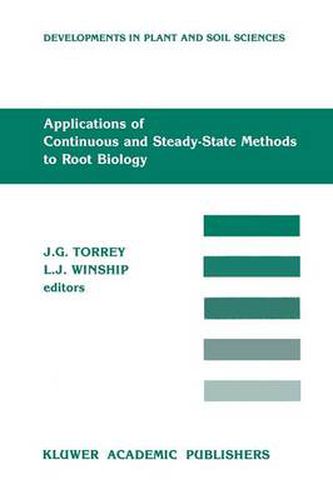Readings Newsletter
Become a Readings Member to make your shopping experience even easier.
Sign in or sign up for free!
You’re not far away from qualifying for FREE standard shipping within Australia
You’ve qualified for FREE standard shipping within Australia
The cart is loading…






This title is printed to order. This book may have been self-published. If so, we cannot guarantee the quality of the content. In the main most books will have gone through the editing process however some may not. We therefore suggest that you be aware of this before ordering this book. If in doubt check either the author or publisher’s details as we are unable to accept any returns unless they are faulty. Please contact us if you have any questions.
This book provides an excellent illustration of the interrelationship between progress in scientific methodology and conceptual advances, and its publica tion should contribute to further advances. It is well known that major advances in understanding often follow the development of new methods. The development of the acetylene reduction assay for nitrogenase activity provides a good example of this interrelationship between theory and methods. Theoretical knowledge led to a search for substrates for nitro genase that could be assayed for more easily than ammonium, the normal product of the enzyme. The discovery of the reduction of acetylene to ethylene by nitrogenase provided the ideal answer to the problem by provid ing a rapid, specific, nondestructive, and inexpensive assay for nitrogenase activity. This assay is now used by almost every laboratory doing research on nitrogen fixation. However, further use and development of the acetylene reduction assay has shown that it can underestimate nitrogenase activity and can even give incorrect relative values under some circumstances. The major problem is that exposure of legume nodules to acetylene can cause a large increase in the resistance to oxygen diffusion into the nodule. This reduced supply of oxygen decreases the rate of nitrogenase activity within a few minutes.
$9.00 standard shipping within Australia
FREE standard shipping within Australia for orders over $100.00
Express & International shipping calculated at checkout
This title is printed to order. This book may have been self-published. If so, we cannot guarantee the quality of the content. In the main most books will have gone through the editing process however some may not. We therefore suggest that you be aware of this before ordering this book. If in doubt check either the author or publisher’s details as we are unable to accept any returns unless they are faulty. Please contact us if you have any questions.
This book provides an excellent illustration of the interrelationship between progress in scientific methodology and conceptual advances, and its publica tion should contribute to further advances. It is well known that major advances in understanding often follow the development of new methods. The development of the acetylene reduction assay for nitrogenase activity provides a good example of this interrelationship between theory and methods. Theoretical knowledge led to a search for substrates for nitro genase that could be assayed for more easily than ammonium, the normal product of the enzyme. The discovery of the reduction of acetylene to ethylene by nitrogenase provided the ideal answer to the problem by provid ing a rapid, specific, nondestructive, and inexpensive assay for nitrogenase activity. This assay is now used by almost every laboratory doing research on nitrogen fixation. However, further use and development of the acetylene reduction assay has shown that it can underestimate nitrogenase activity and can even give incorrect relative values under some circumstances. The major problem is that exposure of legume nodules to acetylene can cause a large increase in the resistance to oxygen diffusion into the nodule. This reduced supply of oxygen decreases the rate of nitrogenase activity within a few minutes.